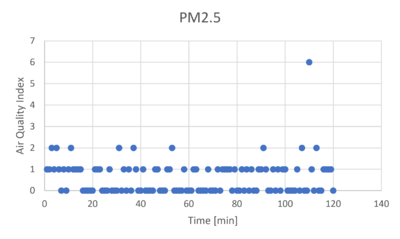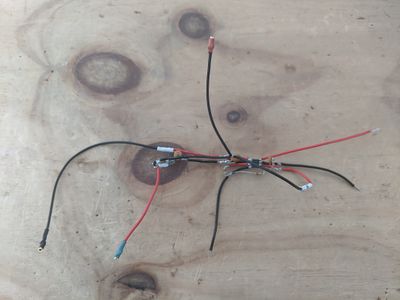Air Sensor
16th September 2020
This series of ongoing updates pertains information regarding the development of a low-cost real-time air quality sensor (AQS).
At the beginning of this project, we utilized various low-cost sensors to measure the concentration of contaminants present in the air. This included carbon monoxide (CO), nitrogen dioxide (NO2), ozone (O3) and sulfur dioxide (SO2), concentration of particulates below 2.5μm (PM2.5) and particulates below 10μm (PM10) as well as the temperature, pressure and humidity of the air.
Plantower PMS5003
The sensor is a 5th generation of PMS sensors developed by Plantower of whom are a leading manufacturer in the development of low-cost particulate sensors. They operate via the laser scattering principle, which has been proven to be the most robust technique for an accurate and precise particulate concentration reading. A test from The World Air Quality Project team demonstrated that the PMS5003 was one of the best sensors for measuring particulate concentration, with readings closely resembling that of the industry standard BAM PM2.5 measurements.
During one of our own tests conducted is proximity to the an air quality sensing station at Box Hill, Victoria demonstrated that the readings were reasonably precise, with the PM2.5 recording between zero and two, and the PM10 recording between zero and three. At these times, the Box Hill monitoring station recorded readings of nine for the PM2.5 and five for the PM10. The difference in the data obtained will most likely be due to the different sensing locations, that is, the AQI sensor is installed in a more populated area with a greater number of vehicles in close proximity, whereas the BoSL sensor was in a more suburban area with less pollution sources nearby.


I'll add info for the rest of the sensors soon!
BoSL team decided it best to experiment with some industry grade gas sensors. The chosen sensors were the alphasense B series sensors for CO, NO2, O3 and SO2. The following potentiostatic circuit was constructed to test the sensors. The design was based off a style of circuit recommended by alphasense in their application notes and implemented with a OP296 dual operational amplifier. This circuit was then constructed to test before being manufactured.
The CO electrochemical gas sensor was then tested. From start up, the sensor begun measuring the analog reading from the CO sensor, registering an analog reading of ~80 that oscillated in the shape of a sin wave. After about a minute, the readings began to fall dramatically until the reading was ~10, then the fall slowed and after a few more minutes the readings reached zero and did not rise again. As a second test, the SO2 sensor was tested and stayed at a constant analog reading of ~60 for numerous minutes. As another test the SO2 sensor was placed behind a car exhaust as it started (highest concentration of SO2 during the startup of the engine, otherwise a negligible proportion of SO2 in the exhaust), this prompted a rise in the readings to ~90 for a period of ~ 10 seconds before the readings read normal again. Upon starting the engine again, the readings did not rise, however this may be due to the engine already being warm. Thus, it cannot be said for certain that the readings rose out of coincidence or actually from the readings, and unfortunately there are not a surplus of safe methods to produce a known amount of SO2 through a chemical reaction of otherwise.


